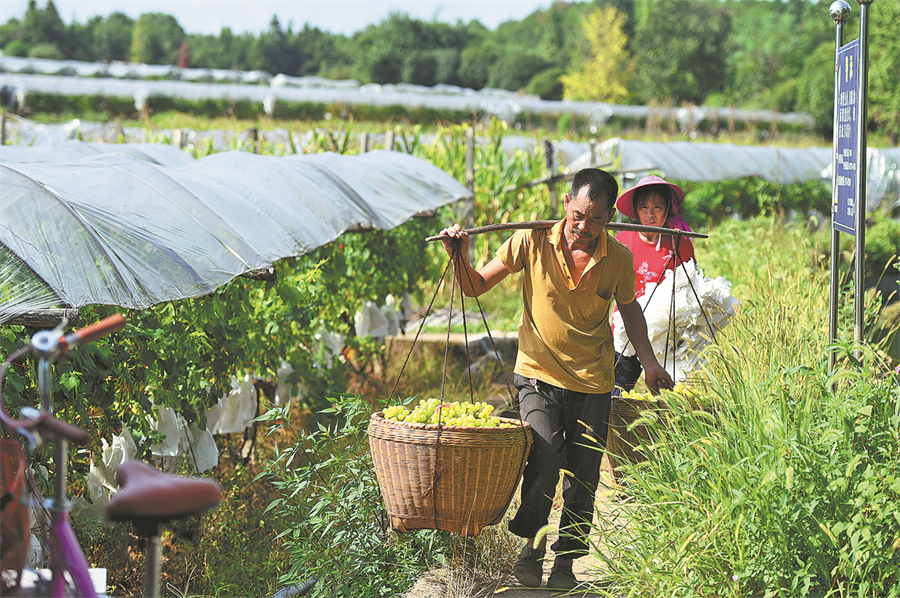Guilin makes greater strides in modernization

Farmers harvest grapes at Maozhushan village, Guilin. [Photo/Xinhua]
Jiang Chengbo, a narrator at the memorial hall, said the battle, which centered on control of three key ferry crossings along the Xiangjiang River, was so fierce that the bodies of fallen Red Army soldiers piled up in the water, turning it red. He added that according to a local saying, Guilin residents vowed after the battle not to drink water from the river for three years and not to eat fish from the waterway for 10 years in memory of the Red Army.
When Xi visited the memorial hall on April 25, 2021, he paid his respects to revolutionary martyrs. He said the Xiangjiang battle was a heroic battle of the Long March and an important historical event that determined the "life or death" of the Chinese revolution. In the face of even greater difficulty, one should think about the Long March and the battle, he said, adding that revolutionary beliefs should be carried forward.
Huang Gexin, a professor of Party history studies at the Party School of the Guilin CPC Committee, said the battle laid a solid foundation for the Zunyi Meeting in January 1935, which established Chairman Mao Zedong's leadership role in the Party and pointed the Chinese revolution in the right direction. Despite its large number of casualties, the Red Army's backbone forces survived, including dozens of commanders who later became major Party and State leaders, Huang said.
All-out efforts are being made in Quanzhou to build a section of the Long March National Cultural Park, which stretches across 15 provincial-level regions along the route of the 12,500-km epic Long March. The project will connect three key ferry crossings along the Xiangjiang River — Daping, Fenghuangzui and Pingshanwith a pedestrian walk as part of the nation's efforts to promote red tourism. Construction of the national cultural park is expected to be completed by the end of this year.
Osmanthus city
In addition to its picturesque landscape and revolutionary legacy, Guilin, which literally means "forest of osmanthus" in Chinese, is known as a production base for osmanthus flowers, which have been planted in the city for more than 2,500 years.
The osmanthus was named Flower of the City in 1984, and Guilin is now home to 14,000 hectares of the plants and produces 10,000 metric tons of them annually, accounting for 60 percent of the national output and generating revenue of 3 billion yuan, Guilin forestry and garden bureau data show.
Guilin has also built a complete industrial chain that integrates osmanthus plantation, processing and tourism. In the city's Xiufeng district, the Osmanthus Commune, a national AAAA (the second-highest level) scenic zone themed on osmanthus culture, has received more than 170,000 visits since it first opened in April 2021.
























